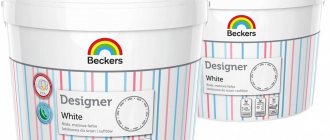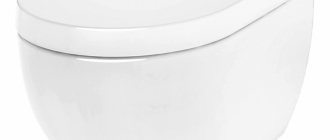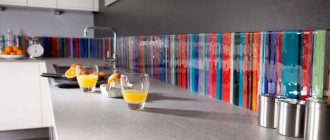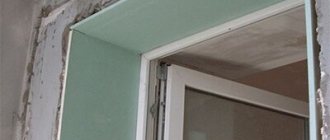Bathroom equipment should be functional, durable and aesthetically pleasing. Natural stone products meet these requirements. What is attractive about the material, what advantages and disadvantages does it have?
In our article, a stone sink is presented in a variety of popular options among users. Products from different species used in the manufacture of plumbing fixtures for many centuries are described in detail. Installation instructions and useful recommendations are provided.
Differences between natural stone and artificial
Compared to stone sinks, products made from chips and polymer components are cheaper, but have the same properties, and sometimes even superior. For example, an artificial analogue is able to withstand heavy objects falling on it, but a natural one is not always able to do so.
Washbasins made of artificial stone during operation are practically no different from their natural counterpart, but they are an order of magnitude cheaper. Made from stone chips, acrylic or polyester resins, pigments, plasticizers and hardeners
Externally, washbasins made of artificial stone are difficult to distinguish from natural products, but they are still inferior in quality, as they contain chemicals. If the smoothness of the surface and appearance is damaged, the product can be restored, which is an advantage. They are easily polished and re-impregnated to form a protective layer.
Image gallery
Photo from
Washbasin made of blue stone
Gray artificial stone sink
Elegant black sinks on the countertop
Red-brown faux stone sink
Thanks to the plasticity of the working solution, it is possible to create sinks of various shapes from artificial stone using casting technology. Processing of such products is simpler, cheaper and more technologically advanced. Sinks can be assembled from several parts using a special glue, the strength of which is very high, and the adhesive seams are invisible.
Tips for daily care
Regular and proper care will help to avoid deterioration in the aesthetic appeal of a black sink. It should be done daily and without the use of cleaning products containing abrasives or chemically aggressive components. Additional care recommendations:
- Do not store wet sponges and wipes on the sink. As water evaporates, it can leave unsightly stains, visible against a black background. In addition, bacteria, including pathogenic ones, multiply very quickly in a humid environment.
- Wipe the sink dry. It is recommended to wipe the bowl dry with a soft towel each time after use. If you leave the sink wet, the evaporating water will cover the surface with unsightly streaks, and as hard water evaporates, limescale will grow. For the same reason, it is necessary to ensure that the tap is tightly closed.
- Apply drain cleaner correctly. Compositions for cleaning sewer pipes necessarily contain strong chemically aggressive components that can dissolve blockages. If such a composition gets on the surface of the composite sink, a chemical reaction may begin that negatively affects the surface of the stone, up to the appearance of irremovable stains. If it is necessary to pour in the cleaning agent, this should be done very carefully, directing the stream to the center of the drain hole.
- Avoid strong impacts. The surface of the sink will most likely not be damaged, but a mark from the impact may remain in the form of particles of metal or other material.
Why are artificial products attractive?
In addition to the low price, sinks made of artificial material have many other advantages:
- Attractive appearance.
- A variety of textures and shades that imitate all kinds of materials with a glossy or matte surface.
- Over the course of 10 years of active use, the products are able to maintain their color unchanged.
- Convenient operation.
- Resistance to damage due to mechanical stress.
- Resistance to critical temperatures and thermal expansion.
- Ease and convenience of care.
- Durability of the working surface.
- Hygienic safety, absence of mucous plaque.
- High strength and reliability.
- Possibility of eliminating defects. Potholes and scratches are removed with sandpaper, loose pieces are glued with acrylic glue.
Among the disadvantages, it is worth noting the sensitivity of the surface to very high temperatures, the appearance of cracks and chips when heavy objects fall on the sink. The appearance of products can be spoiled by abrasive substances used for maintenance.
The relatively high price, which exceeds the cost of products made from other materials, also does not suit buyers.
Professional
Let's take a closer look at what products for getting rid of contaminants are included in this group:
- special products for products made of composite stone. This is the most preferred option for cleaning artificial and natural stone surfaces. The undisputed leader in this category is the “Shumanit” gel for cleaning interior stone;
- products containing chlorine. Effective in the fight against plaque and dirt, have a disinfecting effect;
- Dishwashing detergents can be used for daily care and to prevent the formation of dirt.
Installation of stone sinks in the bathroom
The installation methods for stone sinks also differ. The products are installed or built into sanitary countertops, which are made from the same stone as the sink or from a different material. Most often, wood is used for these purposes.
Most common installation methods
A built-in sink is considered convenient, practical, and requires minimal maintenance. From the outside it is covered by a table top. To install and connect such products, the skills of a novice master are sufficient. This type of sink is installed in a pre-cut hole in the countertop.
For the structure to be reliable, the distance from the edges should not be less than 50 mm. A thin edge may not be able to withstand the weight of a stone.
The sides of the product are located on the same level with the working surface or rise above it. The countertop hides the connections, pipes and drainage device, so the design looks neat and aesthetically pleasing. When choosing a cabinet for a sink, it is necessary to take into account the dimensions of its surface, which must be commensurate.
The semi-recessed bowl is partially embedded, the rest protrudes beyond the countertop. It can be deepened completely or along the sides.
The standard version involves cutting in the rear part, while the front part protrudes forward. If the sink is asymmetrical, it is built into the side
Most often, stone sinks are made in the form of overhead models. In this case, the product rests on a rigid base.
For overhead models, the hole required for the drain neck is also drilled. Its diameter rarely exceeds 70 mm, so it is drilled with a crown
In addition to mortise, semi-recessed and overhead models, there are monolithic (integrated) sinks that form a single whole with the countertop. Due to the absence of joining seams, they are reliable and highly hygienic. The heaviness of such structures and the associated difficulties are their only drawback.
To attach mortise sinks, special fasteners are used, which can be included in the package or selected individually. Sometimes only sealant is used for fixation, which complicates the dismantling process if necessary.
Useful tips for installation and operation
In order for the sink to serve for a long time, you must adhere to the rules of installation and subsequent operation:
- The support must be strong and distribute the weight evenly. The best option is a special forged stand or a tabletop reinforced with a metal frame.
- It is necessary to ensure water drainage and drainage of the sink.
- When installing the drain, you should not create stress in the material; you must be careful when tightening the threaded connections.
- It is necessary to choose a location for the sink that prevents various heavy objects from falling on it.
During operation, it is necessary to take into account that excess moisture can harm the product, and natural or artificial coloring substances can change its color.
Instructions for installing a washbasin on a countertop
To install a sink on a countertop you will need:
- jigsaw;
- electric drill;
- cutting machine;
- pliers;
- diamond disc;
- screwdriver;
- clamps;
- screwdriver;
- roulette,
- pencil, ruler;
- fasteners;
- brush or spatula;
- sealants;
- clean rags.
Attach the template to the countertop for the future hole for the sink, make markings. Cut it out using a jigsaw and drill. Clean the cut and treat it with sealant.
For processing, you can use epoxy resin or silicone. For countertops made of wood or plastic, an alcohol-based sealant is suitable. It is applied with a spatula or brush, the excess is removed.
Stone sinks are quite heavy, so they do not require fasteners. The sealing materials must stabilize, so the structure is left alone for a while
If additional fixation is unavoidable, holes are made in the countertop for future fastening. The fasteners are installed on the sink, the bolts are inserted into the slots of the countertop, which is attached to the base. On the reverse side, a gasket is made or silicone is applied along the contour of the sink.
The plumbing fixture is neatly placed in the countertop and pressed to the surface using clamps. The fasteners are secured in the slots and the sink is fixed. To avoid damaging the tabletop, do not over-tighten the bolts.
What to remember when choosing a synthetic stone bowl for your bathroom
In order not to make a mistake with your choice, it is important to adhere to some rules:
- First, decide on the style of the bathroom, think through all the interior details, and only then choose a suitable washbasin made of synthetic stone.
- Choose a company that will undertake the installation of the sink - it must be reliable, with experienced workers.
- Discuss ordering the bowl with the master, voice all your requirements for the product.
- Inquire about the warranty on the sink.
- Familiarize yourself with the rules for caring for the product, which should be announced by the master.
A well-chosen synthetic stone bowl will fit perfectly with all accessories and elements of the bathroom, and will give the entire room even greater elegance. And with proper care, such a product will last for more than one year.
Removing scratches
Sooner or later, even with careful use, scratches will form on the surface. This mainly applies to acrylic sinks; granite sinks are much stronger. How to restore the original appearance?
Paste GOI
You can try polishing small scratches with GOI paste. To do this, we use a drill with an attachment. You can also polish it by manually applying the paste to a soft cloth.
Sandpaper
In cases with large scratches or other deep damage, you can use sandpaper of various grain sizes, preferably moisture-resistant. First, we take fine-grained sandpaper for primary sanding—from 200 to 125 microns, and finish with a zero grade of 80-40 microns. When processing with sandpaper, you need to wet the surface with water, this will achieve a more delicate sanding. Ideally, after sanding, you need to polish with GOI paste or use a colorless car polish.
Emergency measures using sandpaper will be needed not only because of scratches. Absolutely unpredictable situations may arise: Someone threw a cigarette butt into a stone sink, or decided to burn paper in it. This also happens, especially when using outdoor sinks.
Special household chemicals
There are many cleaning products on the household chemicals market that can renew things.
- Сillit Bang . Anti -stain detergents
- Sanfor+ white. For light-colored sinks
- BIOSOL Na6 Specially for granite stone sinks
- Akrilan premium from Baga
- Ceramite from bugs based on chlorine.
- Akem i Several different cleaners. From mild soap to intense cleanser.
- Shumanit cleaner for granite stone.
- Prosept Cooky spray











